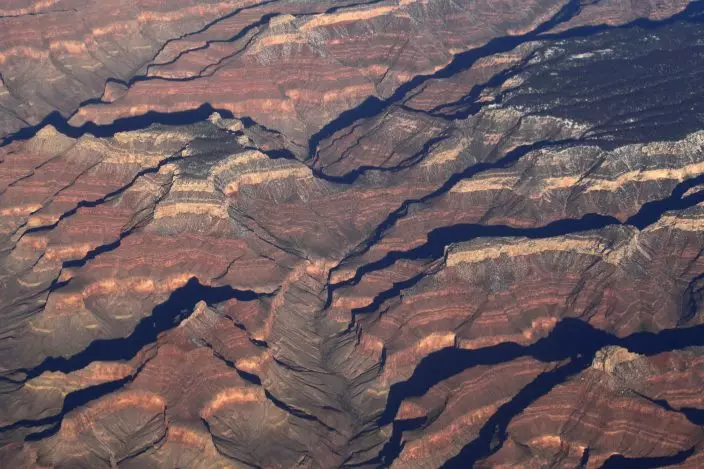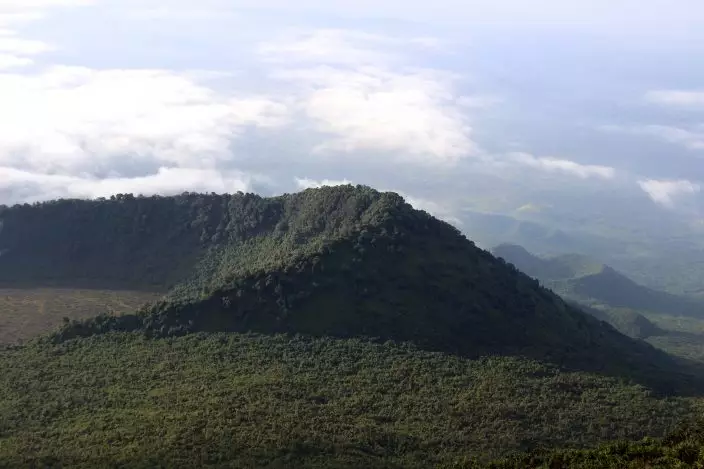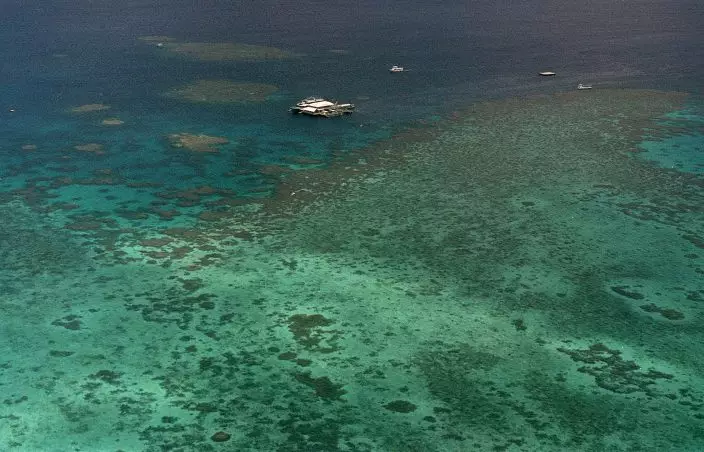Climate change is increasingly damaging the U.N.’s most cherished heritage sites, a leading conservation agency warned Wednesday, reporting that Australia’s Great Barrier Reef and dozens of other natural wonders are facing severe threats.
Climate change that has lead to shrinking glaciers, increasing fires, floods and droughts, and the bleaching of coral reefs are among the troubles facing 83 of the 252 World Heritage Sites listed by UNESCO, the U.N.'s cultural agency.
Sixteen World Heritage sites have deteriorated since the last World Heritage Outlook was released three years ago, while only eight improved, said the International Union for Conservation of Nature, made up of governments and civil society groups and advises UNESCO on natural threats to those sites.

FILE - This Dec. 17, 2019 file aerial photo shows Arizona's Grand Canyon. A leading conservation agency is warning that climate change is damaging the U.N.' most cherished heritage sites. Climate change is increasingly damaging the U.N.’s most cherished heritage sites, a leading conservation agency warned Wednesday Dec. 2, 2020, reporting that Australia’s Great Barrier Reef and dozens of other natural wonders are facing severe threats. (AP PhotoCharlie Riedel, File)
“Natural World Heritage sites are amongst the world’s most precious places, and we owe it to future generations to protect them,” IUCN Director-General Bruno Oberle said. “Climate change is wreaking (havoc) on natural World Heritage, from shrinking glaciers to coral bleaching to increasingly frequent and severe fires and droughts.”
The report says the Great Barrier Reef, where ocean warming, acidification and extreme weather have added to the coral decline and shrinking marine species populations, were one of four sites in Australia under “very high” threat.
The islands of protected areas in the Gulf of California in Mexico have also entered the “critical” category in the listing. Spain's Garajonay National Park, Olympic National Park in the United States, and Mexico's Monarch Butterfly Biosphere Reserve are among those under “very high” threat, the new report said.

FILE - This Dec. 11, 2016 file photo shows the Virunga National Park, taken from the rim of the crater of the Nyiragongo volcano and looking over the crater of another, extinct volcano, taken in North Kivu Province, Democratic Republic of the Congo. Climate change is increasingly damaging the U.N.’s most cherished heritage sites, a leading conservation agency warned Wednesday Dec. 2, 2020, reporting that Australia’s Great Barrier Reef and dozens of other natural wonders are facing severe threats. (Juergen Baetzdpa via AP, File)
It said while 63% of the heritage sites are classified as “good” or “good with some concerns,” 30% are of “significant concern” and 7% are in “critical” shape.
In a difference from the previous two IUCN reports, climate change has eclipsed “invasive alien species” — such as when foreign rodents, fish or plants are transplanted, accidentally or not, to new environments — as the most potent threat against such sites.
Human activities like tourism, hunting and fishing, and livestock grazing have also had an impact.

FILE - This Sept. 10, 2001, file photo shows Agincourt Reef, located about 30 miles off the coast near the northern reaches of the 1,200-mile long Great Barrier Reef. Climate change is increasingly damaging the U.N.’s most cherished heritage sites, a leading conservation agency warned Wednesday Dec. 2, 2020, reporting that Australia’s Great Barrier Reef and dozens of other natural wonders are facing severe threats. (AP PhotoRandy Bergman, File)
Read all of AP’s stories about climate change at https://apnews.com/hub/Climate.


